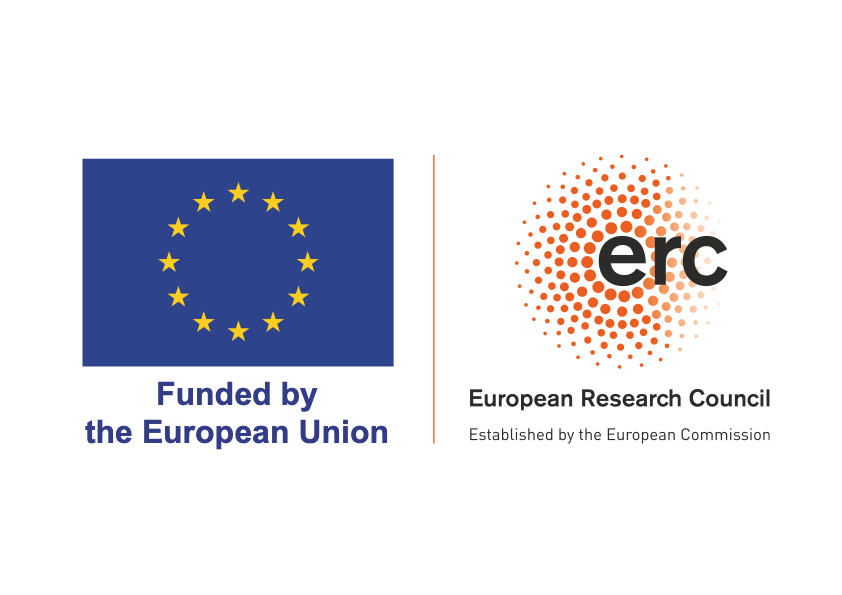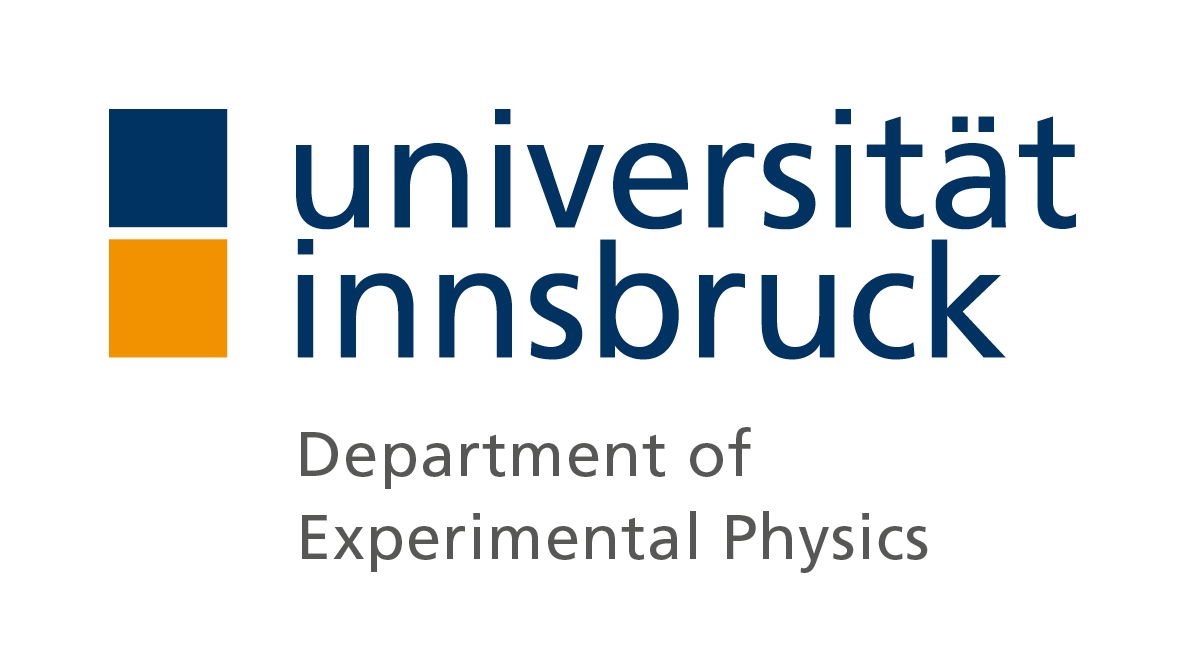Simulating 2D Spin Lattices with Ion Crystals
Analog quantum simulation with trapped ions in Innsbruck
In Innsbruck an analog quantum simulator based on 1D strings of Calcium-40 ions stored in a linear Paul trap is already used successfully to study systems of interacting spins with up to ~20 particles. In the approach used here and several other groups around the world, a spin-half particle is encoded into two electronic states of a trapped ion, which is manipulated via laser pulses: coherent single-ion operations and measurements are combined with engineered spin-spin interactions mediated by the motional modes of the ion crystal to directly implement e.g. Ising-type Hamiltonians in the system.
Why extend the system into the second dimension?
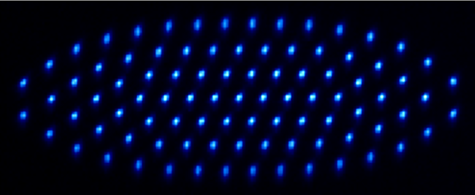
91 ion crystal in our setup
Scaling up an ion chain to a large number of particles (>50) presents a challenging task as extremely anisotropic trapping potentials are required to keep the ion crystal linear, leading to issues such as high heating rates of the axial motional modes as well as problems in addressing outer ions in long strings. In our approach of using 2D ion crystals, such problems can be circumvented, which will enable us to scale our quantum simulator up to 100 particles.
Our approach
The objective of this project is to experimentally realize a 100-particle quantum simulator with complete quantum control at the single-particle level. We combine the proven methodology for realizing spin models in linear ion crystals stored in radio-frequency traps with an idea of extending such a system into two dimensions, thus enabling studies of 2D non-equilibrium physics with a larger particle number.
The centerpiece of our setup is a novel monolithic linear Paul trap, which allows us to create the anisotropic potentials required for trapping 2D ion crystals while also being able to maintain sufficient optical access for imaging as well as single-ion addressing.
Our main experimental goals
- Trapping and laser-cooling of two-dimensional ion crystals to millikelvin temperatures in a radio-frequency trap.
- Realization of quantum spin models with particle numbers for which the simulation becomes intractable by numerical techniques.
- Development of methods for validating quantum simulators.
- Investigation of various models with spin-frustration in two-dimensional geometries.
Project members
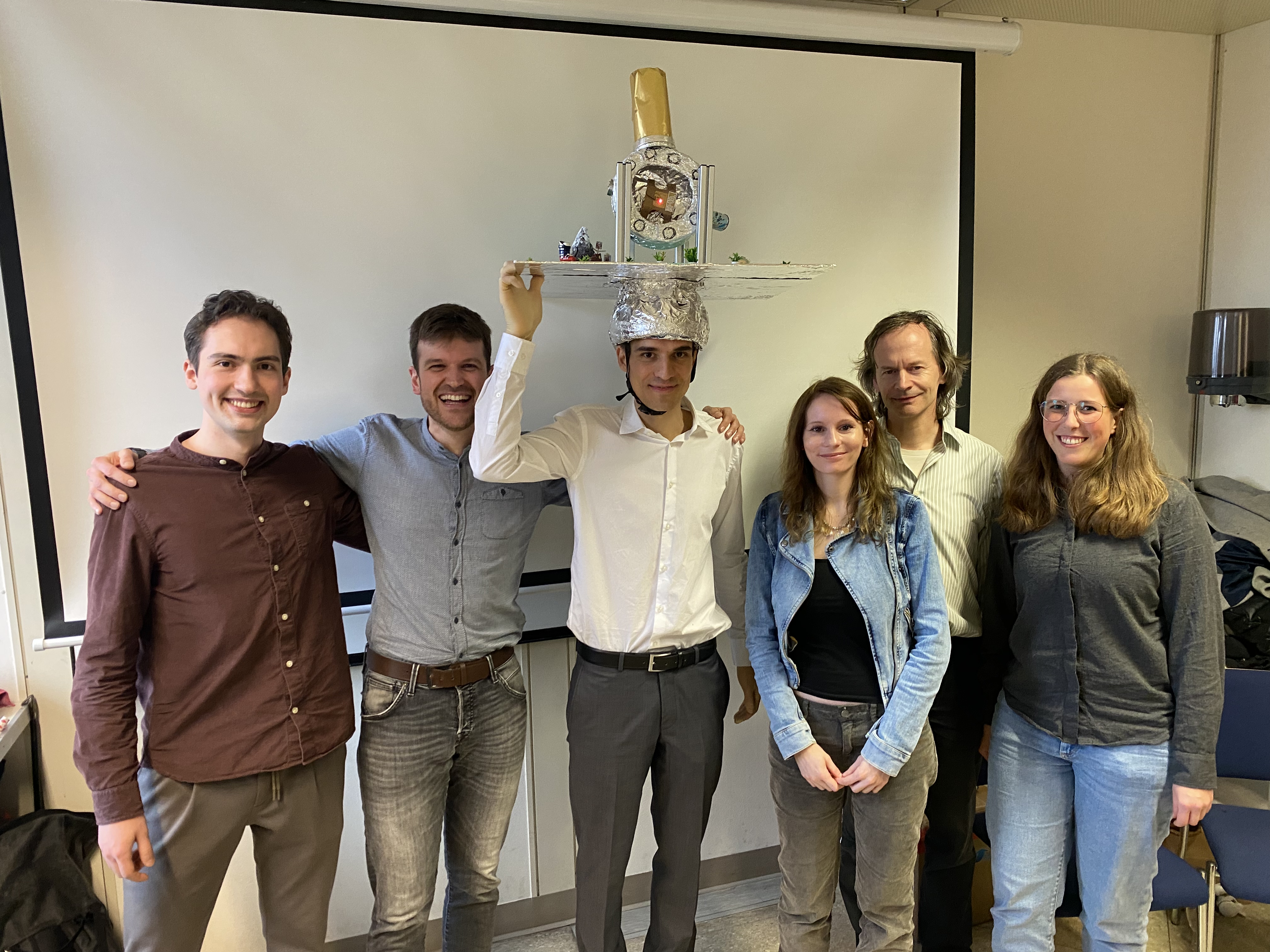
Team at Dominik's defence
- Christian Roos (Project Leader)
- Matthias Bock (Postdoc)
- Artem Zhdanov (PhD Student)
- Leo Walz (PhD Student)
- Nele Griesbach (Master Student)
Former members: Dominik Kiesenhofer, Helene Hainzer, Tuomas Ollikainen
If you are interested in joining our team, please
Publications and preprints
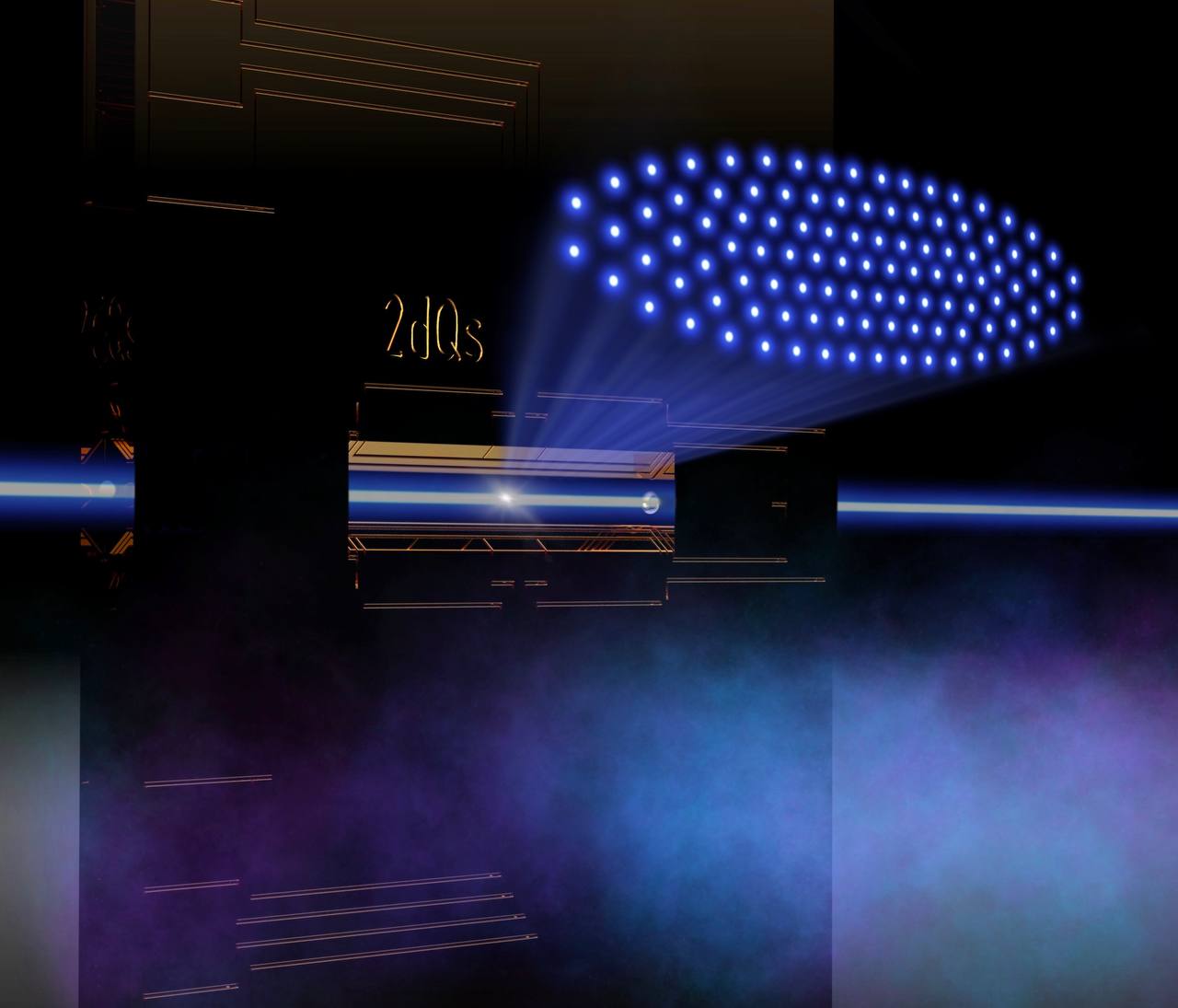
- Correlation spectroscopy with multi-qubit-enhanced phase estimation (Phys. Rev. X 2024) (arXiv)
- Sideband thermometry of ion crystals (PRX Quantum 2023) (arXiv)
- Controlling two-dimensional Coulomb crystals of more than 100 ions in a monolithic radio-frequency trap (PRX Quantum 2023) (arXiv)
- Polarization-gradient cooling of 1D and 2D ion Coulomb crystals (New J. Phys. 2020) (arXiv)
Funding

